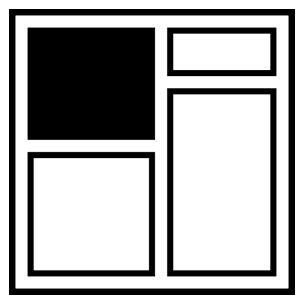Why Design Systems Fail
Design systems are so hot right now, and for good reason. They promote a modular approach to building a product, and ensure organizational unity and stability via reusable code snippets and utility styles. They make prototyping a breeze, and provide a common language for both designers and developers.
A design system is a culmination of several individual components, which can include any or all of the following (and more):
- Style guide or visual pattern library
- Design tooling (e.g. Sketch Library)
- Component library (where the components live in code)
- Code usage guidelines and documentation
- Design usage documentation
- Voice and tone guideline
- Animation language guideline
Design systems are standalone (internal or external) products, and have proven to be very effective means of design-driven development. However, in order for a design system to succeed, everyone needs to get on board.
I’d like to go over a few considerations to ensure design system success and what could hinder that success.
Organizational Support
Put simply, any product, including internal products, needs support. Something as cross-functional as a design system, which spans every vertical project team, needs support from the top and bottom levels of your organization.
What I mean by that is that there needs to be top-level support from project managers up through VP’s to see the value of a design system, to provide resources for its implementation, and advocate for its use company-wide. This is especially important in companies where such systems are being put in place on top of existing, crufty codebases, because it may mean there needs to be some time and effort put in the calendar for refactoring work.
Support from the bottom-up means that designers and engineers of all levels also need to support this system and feel responsibility for it. A design system is an organization’s product, and everyone should feel confident contributing to it. If your design system supports external clients as well (such as contractors), they too can become valuable teammates.
A design system needs support and love to be nurtured and to grow. It also needs investment.
Investment
To have a successful design system, you need to make a continuous effort to invest resources into it. I like to compare this to working out.
You can work out intensely for 3 months and see some gains, but once you stop working out, those will slowly fade away. If you continue to work out, even if its less often than the initial investment, you’ll see yourself maintaining your fitness level at a much higher rate than if you stopped completely.
If you invest once in a design system (say, 3 months of overhauling it) but neglect to keep it up, you’ll face the same situation. You’ll see immediate impact, but that impact will fade as it gets out of sync with new designs and you’ll end up with strange, floating bits of code that nobody is using. Your engineers will stop using it as the patterns become outdated, and then you’ll find yourself in for another round of large investment (while dreading going through the process since its fallen so far out of shape).
With design systems, small incremental investments over time lead to big gains overall.
With this point, I also want to note that because of how they scale, design systems can really make a large impact across the platform, making it extremely important to really invest in things like accessibility and solid architecture from the start. You don’t want to scale a brittle system that’s not easy to use.
Take care of your design systems, and keep working on them to ensure their effectiveness. One way to ensure this is to have a dedicated team working on this design system, managing tickets and styling updates that trickle out to the rest of your company.
Responsibility
With some kind of team to act as an owner of a design system, whether it be the design team, engineering team, or a new team made of both designers and engineers (the best option), your company is more likely to keep a relevant, up-to-date system that doesn’t break.
This team is responsible for a few things:
- Helping others get set up on the system (support)
- Designing and building components (development)
- Advocating for overall UI consistency and adherence (evangelism)
- Creating a rollout plan and update system (product management)
As you can see, these are a lot of roles, so it helps to have multiple people on this team, at least part of the time, if you can. One thing I’ve found to be effective in the past is to hold office hours for coworkers to book slots within to help them get set up and to answer any questions about using the system. Having an open Slack channel also helps for this sort of thing, as well as for bringing up bugs/issues/ideas and being an channel for announcements like new releases.
Communication
Once you have resources and a plan to invest in a design system, its really important that this person or team acts as a bridge between design and engineering. Continuous communication is really important here, and the way you communicate is even more important.
Remember that nobody wants to be told what to do or prescribed a solution, especially developers, who are used to a lot of autonomy (usually they get to choose their own tools at work). Despite how much control the other engineers have on the process, they need to feel like they have input, and feel heard.
This can be challenging, especially since ultimately, some party needs to be making a final decision on direction and execution. Because it’s a hard balance to strike, having open communication channels and being as transparent as possible as early as possible is a good start.
Buy-in
For all of the reasons we’ve just looked over, good communication is really important for getting buy-in from your users (the engineers and designers), as well as from product management.
Building and maintaining a design system is surprisingly a lot of people-ops work.
To get buy-in where you don’t have a previous concensus that this is the right direction to take, you need to make people want to use your design system. A really good way to get someone to want to use a product is to make it the path of least resistance, to show its value.
Gather examples and usage wins, because showing is much more powerful than telling.
If you can, have developers use your product in a low-stakes situation where it provides clear benefits. Hackathons are a great place to debut your design system. Having a hackathon internally at DigitalOcean was a perfect opportunity to:
- Evangelize for the design system
- See what people were using the component library for and what they were struggling with (excellent user testing there)
- Get user feedback afterward on how to improve it in future iterations
- Let people experience the benefits of using it themselves
These kinds of moments, where people explore on their own are where you can really get people on your side and using the design system, because they can get their hands on it and draw their own conclusions (and if they don’t love it — listen to them on how to improve it so that they do). We don’t always get so lucky as to have this sort of instantaneous user feedback from our direct users.
Architecture
I briefly mentioned the scalable nature of design systems. This is exactly why it’s important to develop a solid architecture early on in the process. Build your design system with growth and scalability in mind. What happens if your company acquires a new product? What happens when it develops a new market segment? How can you make sure there’s room for customization and growth?
A few things we’ve found helpful include:
Namespacing
Use namespacing to ensure that the system doesn’t collide with existing styles if applying it to an existing codebase. This means prefixing every element in the system to indicate that this class is a part of the design system. To ensure that you don’t break parts of the existing build (which may have styled base elements), you can namespace the entire system inside of a parent class. Sass makes this easy with its nested structure.
This kind of namespacing wouldn’t be necessary per se on new projects, but it is definitely useful when integrating new and old styles.
Semantic Versioning
I’ve used Semantic Versioning on all of the design systems I’ve ever worked on. Semantic versioning uses a system of Major.Minor.Patch for any updates. You can then tag released on Github with versioned updates and ensure that someone’s app won’t break unintentionally when there is an update, if they are anchored to a specific version (which they should be).
We also use this semantic versioning as a link with our design system assets at DigitalOcean (i.e. Sketch library) to keep them in sync, with the same version number corresponding to both Sketch and code.
Our design system is served as a node module, but is also provided as a series of built assets using our CDN for quick prototyping and one-off projects. For these built assets, we run a deploy script that automatically creates folders for each release, as well as a latest folder if someone wanted the always-up-to-date version of the design system.
So, semantic versioning for the system I’m currently building is what links our design system node module assets, sketch library assets, and statically built file assets.
The reason we have so many ways of consuming our design system is to make adoption easier and to reduce friction.
Friction
A while ago, I posed the question of why design systems become outdated and unused, and a major conclusion I drew from the conversation was:
“If it’s harder for people to use than their current system, people just won’t use it”
You have to make your design system the path of least resistance, lowering cognitive overhead of development, not adding to it. This is vital. A design system is intended to make development much more efficient, enforce a consistent style across sites, and allow for the developer to not worry as much about small decisions like naming and HTML semantics. These are already sorted out for them, meaning they can focus on building product.
But if your design system is complicated and over-engineered, they may find it frustrating to use and go back to what they know, even if its not the best solution. If you’re a Sass expert, and base your system on complex mixins and functions, you better hope your user (the developer) is also a Sass expert, or wants to learn. This is often not the case, however. You need to talk to your audience.
With the DigitalOcean design system, we provide a few options:
Option 1
Users can implement the component library into a development environment and use Sass, select just the components they want to include, and extend the system using a hook-based system. This is the most performant and extensible output. Only the components that are called upon are included, and they can be easily extended using mixins.
But as noted earlier, not everyone wants to work this way (including Sass a dependency and potentially needing to set up a build system for it and learn a new syntax). There is also the user who just wants to throw a link onto their page and have it look nice, and thats where our versioned built assets come in.
Option 2
With Option 2, users pull in links that are served via a CDN that contain JS, CSS, and our SVG icon library. The code is a bit bigger than the completely customized version, but often this isn’t the aim when people are using Option 2.
Reducing friction for adoption should be a major goal of your design system rollout.
Conclusion
Having a design system is really beneficial to any product, especially as it grows. In order to have an effective system, it’s important to primarily always keep your user in mind and garner support from your entire company. Once you have support and acceptance, this system will flourish and grow. Make sure someone is responsible for it, and make sure its built with a solid foundation from the start which will be carefully maintained toward the future. Good luck, and happy holidays!
About the author
Una Kravets is an international speaker, technical writer, open source advocate, and UI Engineer on the UX team at DigitalOcean. Una also co-hosts the Toolsday podcast and started both the DC and Austin Sass Meetups. She’s a performance nerd, loves the open source community and listens to way too many audio books.







